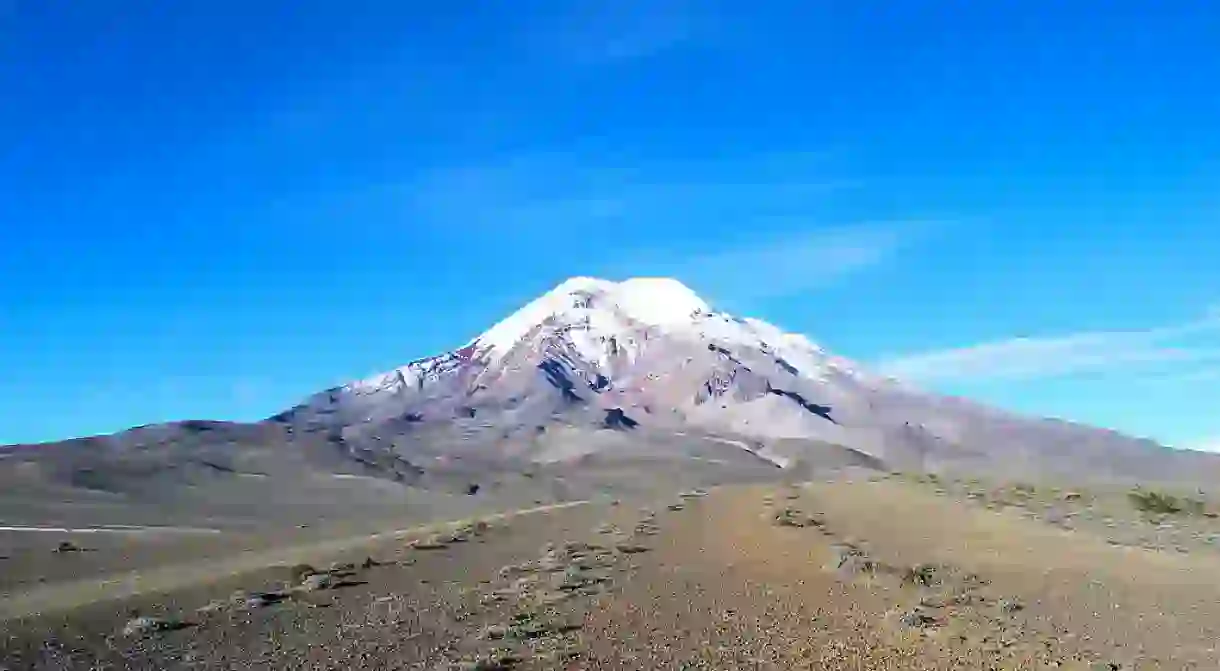A Guide to Discovering Chimborazo Wildlife Reserve, Ecuador

The Chimborazo Wildlife Reserve, located on the slopes of the highest mountain in Ecuador, is frequented year-round by adventure travelers who come to hike, bike, and climb this unique Andean habitat. Home to a wide variety of flora and fauna, it makes for a fascinating getaway – read our guide to find out more.
Where to stay
Riobamba
The closest city to the Chimborazo Wildlife Reserve is Riobamba. The drive from the center of town to the main entrance of the reserve takes about 45 minutes – most hotels can recommend a driver who can be hired for the day.
Chimborazo Lodge
The only place to stay within a short drive of the main entrance to the reserve is Chimborazo Lodge. The German-style accommodation is the creation of Marco Cruz, a well-known Ecuadorian climber who made a name for himself in the late 1960s and 1970s. While he built the lodge to help climbers adjust to altitude before climbing to the summit, it has become popular with a wide variety of guests, from birdwatchers looking for the Star of Chimborazo hummingbird, which can be found on the property, to nature lovers hoping to see white-tailed deer and the Andean fox, to those wanting to hike and explore the local trails.
Chimborazo Lodge, kilometer 23 vía al Chimborazo, Ecuador, +593 3 236 4278
The refuges
You’ll need to reserve if you want to stay at Carrel Refuge or Edward Whymper Refuge, the hostel-like lodgings provided for mountain climbers acclimatizing before climbing to the summit of Chimborazo. There are no private rooms, only communal bunk beds, and you must bring your own sleeping bag – camping can be arranged. These locations are at 4,800 meters (15,750 feet) and 5,000 meters (16,400 feet) respectively.
Contact Alexandra Calero, +593 3 296 5820 or 97 908 4401
Where to eat
There are only two places within the Chimborazo Wildlife Reserve to purchase a meal – both the Carrel Refuge and the Edward Whymper Refuge run kitchens, and it is usually possible to purchase hot drinks and snacks. Both offer breakfast and lunch but can run out of food on busy days, so it’s best to pack high energy snacks and carry your own water.
Things to do
Visit the Carrel Refuge
The drive from the reserve entrance to the Carrel Refuge is part of the adventure. The road traverses high paramo, gaining altitude with every turn – views of the surrounding countryside are stunning on a clear day. The actual Carrel Refuge is a large parking lot with access to the trail that heads to the Edward Whymper Refuge. If you don’t plan on hiking further, walk up the trail about 30 meters (100 feet) to the memorial monument and enjoy the view of Chimborazo.

Hike to the Edward Whymper Refuge
Although the trail from the Carrel Refuge to the Edward Whymper Refuge is only a few hundred feet in distance and rises only 60 meters (200 feet) in altitude, it is a difficult trek, even for those in good shape. On holidays and weekends, there will be a genuine chagra, or Ecuadorian cowboy, offering rides on horseback.
If weather conditions allow, consider hiking uphill past the refuge to a small, high alpine lake formed by glacial melt. Don’t hike past the warning signs – this glacier may look solid but experiences small avalanches of rocks and ice, especially on warm days.
Check out the Polylepis Forest
On the main highway not far from the Chimborazo Lodge is a sign directing travelers to the Polylepis Forest. The dirt road is in fair condition and takes you across the desert-like terrain where herds of wild vicuña (a relative of the llama) often graze on the low ground cover. The hiking trail climbs slightly in altitude, but is well-graded and in good condition, while the views of the surrounding countryside are spectacular, even on cloudy days. Hiking in the early morning and late afternoon increases the chance of seeing Chimborazo from the trail. Your final destination is a stand of ancient trees that once covered large swathes of the Ecuadorian Andes.

Hit the Iceman Trail
The Last Iceman of Chimborazo, Baltazar Ushca Tenesaca, is the last person to harvest ice from the Chimborazo glacier. His weekly route is now a hiking trail that can be accessed from Cuatro Esquinas vía E-35 going into Riobamba. The trail is approximately 10 km (6 miles) long with an elevation gain of almost 1,525 meters (5,000 feet).
Go mountain biking
There are several tour companies offering mountain bike tours of the Chimborazo Wildlife Reserve. The most popular drops clients and bikes at the parking lot of the Carrel Refuge where they make their way down the mountain on a well-designed, if often steep, trail.

Climb to the summit of Chimborazo
Mountain climbers from around the world come to Ecuador to climb to the summit of the highest mountain in the world (at least when measured from the center of the earth rather than by sea level). Chimborazo makes a great first summit for beginner alpinists, as the climb requires little technical experience.














